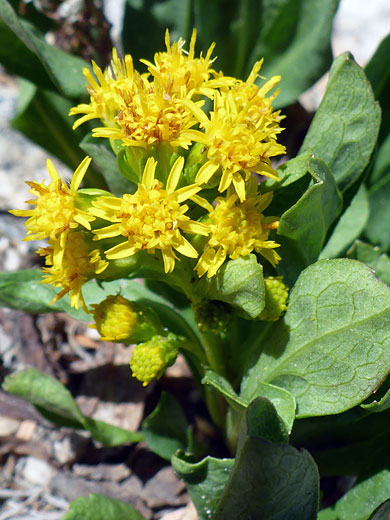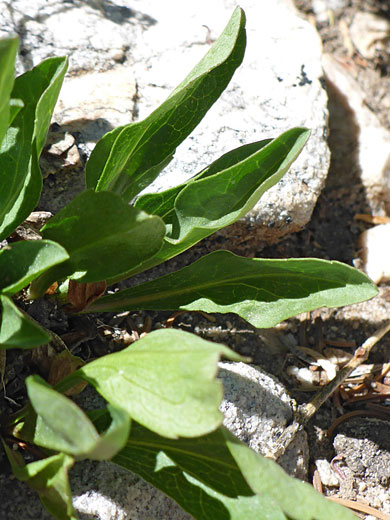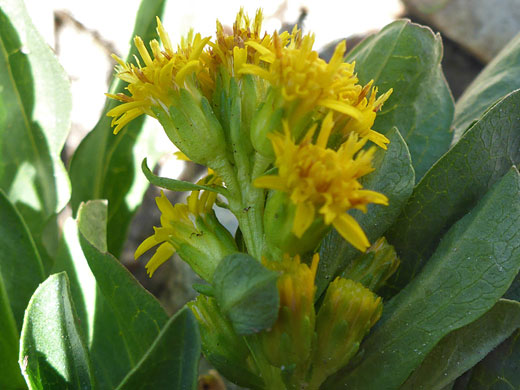Common names:
Alpine goldenrod, Rocky Mountain goldenrod, northern goldenrod
Family:
Scientific name:
Solidago multiradiata
Main flower color:
Range:
Western states between the Rocky Mountains and the Pacific Ocean
Height:
Between 5 and 12 inches
Habitat:
Mountain slopes, meadows, open forests; up to 12,000 feet
Leaves:
Lancelolate to linear or spatulate, up to 8 inches long, with bristly hairs along the edges and small, rounded teeth towards the apex
Season:
July to September
The inflorescence of solidago multiradiata is an elongated cluster, growing at the top of a stout, unbranched stem that usually varies in height between 5 and 12 inches, but can grow up to 30 inches in favorable locations. Plants produce between 5 and 100 flowers, consisting of 12 to 18 small yellow ray florets and a center of 10 to 35 yellow ray florets, which when mature elongate to about the same length as the rays. The light green phyllaries have pointed tips and ciliate edges, and are arranged in two rows; those in the outer row are slightly shorter than those in the inner.
Leaves at the base and along the lower stem are linear or slightly spatulate (spoon-shaped), with stalks, and have rounded teeth around the tip (crenate). Those higher up are smaller, stalkless, ovate to linear, clasping, and untoothed, though are more likely to have hairy edges. The plant is locally common in high elevation regions.
Leaves at the base and along the lower stem are linear or slightly spatulate (spoon-shaped), with stalks, and have rounded teeth around the tip (crenate). Those higher up are smaller, stalkless, ovate to linear, clasping, and untoothed, though are more likely to have hairy edges. The plant is locally common in high elevation regions.
All Contents © Copyright The American Southwest | Comments and Questions | Contribute | Site Map







